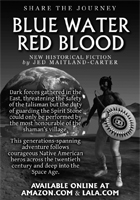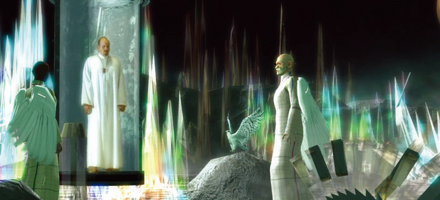| Featured Director - Jason J. Brown | ||
 |
Jason J. Brown I'm a digital media specialist working out of Toronto Canada. I produce web videos for business folks and community organizations. I also design sets for theatre companies, plus I create websites, and advertising materials.
|
|
A Creative Designer with iClone & Mocap Q: How has your mocap experience been with iClone and Kinect? What are the advantages of using Kinect to do motion capture? Besides basic character mocap, have you ever used the mocap feature for any other application? I got the Xbox 360 and Kinect bundle when it first launched in November, 2010. All over the web, people were already hacking into the Kinect system. At the time, Microsoft did not have a formal position about all the hacking going on. After about two weeks of playing with Xbox Kinect games, I suggested in the Reallusion forums that perhaps RL could incorporate the Kinect for mocap. People thought that it was a stupid idea and that the Kinect was a terrible device. As everyone knows now, Reallusion did include the Kinect mocap into iClone, and in my opinion it has totally changed iClone forever. The Kinect takes iClone to the next level, not just for mocap-- which is amazing, but for other kinds of interactivity such as the ones I demonstrated in my video about OTHER USES FOR THE KINECT SENSOR. The advantages of Kinect are enormous-- and the Motion Layer Panel makes clean-up incredibly easy. My last video involved a 30 second-long mocap sequence where the avatar needed to interact with several objects in the scene. By further tweaking the mocap with the iClone Motion Layer Panel, I was able keep and use the entire 30 second capture as a single, continuous sequence. There is no easy way to key frame 30 seconds of continuous motion, especially if there are several avatars involved. The Kinect is not perfect, but the hours and hours of time it saves means that you can directly get into your ideas while spend less of your time doing painful menial work. Overall, the main attraction of iClone 5 is that you can quickly set up a rough scene and then spend many pleasant hours refining and tweaking it.
I posted a video recently involving the iClone Kinect mocap, and instead of discussing the technology or technique, people are actually talking about the avatar's emotional motives! So I think that the mocap helps drive emotions through body language which eventually show in the animation.
Q: How did you start using iClone? What has been your experience? I started using CrazyTalk for a project to produce a training tutorial. It was on contract for a government department and they wanted a specific animated character for the tutorial. I had just purchased CrazyTalk and I was experimenting with it. Eventually, CrazyTalk led me to iClone. iClone's ease of use and content management system appealed to me because for many years I was using an old 3D modeling program called TrueSpace. I wasn't very good at modeling, and I didn't really enjoy modeling, but I loved working in 3D and I also needed to be able to generate 3D content for my own short films. I made several short films using a greenscreen and TrueSpace. I found iClone extremely easy to use, as it allowed me to focus on what I'm good at. I can also get models I need from the Reallusion Marketplace or from Google's 3D Warehouse. Q: We are always amazed by the creative applications you employ with iClone. How do you come up with these ideas? And how do you use them in your work? I watched a lot of movies and I read a lot of books before. Books are great for giving you ideas to visualize -- and movies are good for showing you how OTHER people visualize stuff. I started off with one small, crazy idea and then built around it over time. I like being able to start a scene, work through the scene until I become stuck or hit a roadblock, close the scene, work on a different scene, and then go back to the original to refine it. I usually have several different scenes in progress, at the same time. This year I had the chance to create a book advertisement for the New York Times Book Review, and also to create some animation work for a documentary television show, which aired nationwide on CBC in Canada. Both times I used iClone! Q: What is your next iClone project? After using iClone to create videos and advertisements, I am now working on a personal project. It's a ten minute sci-fi short film. In the film, there are three or four different storylines, and I've been working on it on and off for the past year. I started working on it during iClone 4.2, but I got stuck when it came to animating the scenes containing avatars. My scenes were very long, and I wasn't sure I wanted to key frame long sequences of animation. So when the Kinect mocap capability was introduced, I hoped it would make animating these avatars easier, and it was. So I'm really excited to reopen these old scenes and re-animate them with the iClone Kinect system. Q: What are your expectations for future iClone features? The most important Kinect-based improvement for iClone is to be able to do mocap in full screen or to be able to hide the toolbars. That way I could create interactive presentations with the Kinect, iClone and a projector. I would also like to see subsurface scattering for skin, and built in 3D text creation tools. For particle effects, I would like to see attractors and repellers. Finally, I would like to see better accuracy in the soft body physics engine. |
||
Solutions for : 3D
Real-time filmmaking | 3D character
animation | Talking facial animation | Facial photo editor | Moble applications |
| Privacy
Policy | EULA | RSS
Feed | Site
Map Copyright © 2015 Reallusion Inc. All rights reserved. |







